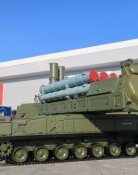[Editorial] Ten Year Vacuum in Water Management Policy
[Editorial] Ten Year Vacuum in Water Management Policy
Posted June. 05, 2001 09:46,
As the country suffers from a sever drought, there are the drinking water shortage in the central part of the country, the damage on the crops, and the shortage of water for industries as well.
It is very important for Korea, which has a big seasonal difference in precipitation resulting continuous droughts and deluges, to have a good water management policy. Although Korea annually receives 130 percent of the world average precipitation, UN still classifies Korea as a `country with water-shortage` due to the high population density that lowers the preserved amount of water per person to a mere 11 percent of the world average.
In addition, the peculiarity of Korea’s weather in which two third of the annual rainfall is concentrated during summer season makes the water flow directly into the oceans through rivers. If we do not store up water during summer, it is very hard to supply water to houses, factories, and rice fields and farms. Since there have been no more construction of dams after the Tamjin Dam in Janghung that began in 1992, it is no exaggeration to say that there has been a 10 year vacuum in the water management policy of a country with water-shortage.
Environmental organizations argue that we have to resolve the water shortage problem by saving water through raising the price of water and maintaining the leaking pipes, rather than constructing dams that can destroy the environment. Residents in the regions are concerned about their crops that may be influenced by mist, which has appeared after construction of dams.
The demand-based water management police that environmental organizations emphasize is very important. However, that kind of policy is a limited one. Therefore, a country like Korea, whose annual precipitation is not constant, needs to secure stable water supply means. Since water consumption is directly related with the quality of people’s life, there exists a tendency, in which the higher people’s income goes up, the more amount of water is consumed.
Even though the Seoul metropolitan area, in which 20 million people live, depends on the Lake Paldang, there seems to be a shortage from the year of 2006. After the plan to construct Dong River Dam was canceled due to the opposition from environmental organizations, the government does not have a definite countermeasure.
Busan, the second largest city in Korea, collect its drinking water from the downstream of Nakdong River. That means, if there is a water pollution at the upstream of the river, they cannot collect water. The quality of water also drops down during dry seasons. Although to secure a stable water resource that has good water quality is urgent, the plan to construct Hapchun Dam is not being progressed due to local residents’ strong opposition.
It is the government’s homework to develop the environment-friendly technologies and to find plans that are advantageous for local people. We are to pay attention to the government’s comprehensive long-term water resource plan and the long-term dam construction plan that will be released during the second half of this year.
Headline News
- Ukraine says N. Korea’s first troops arrive in Kursk
- N. Korea begins installing barriers on Donghae Line after 'bombing show'
- K-defense operating profit expected to jump by 200% in Q3
- Seoul City launches DDP rooftop tours, celebrating 10th anniversary
- Ahn Jung-geun’s historic writings return to Korea in 15 years







